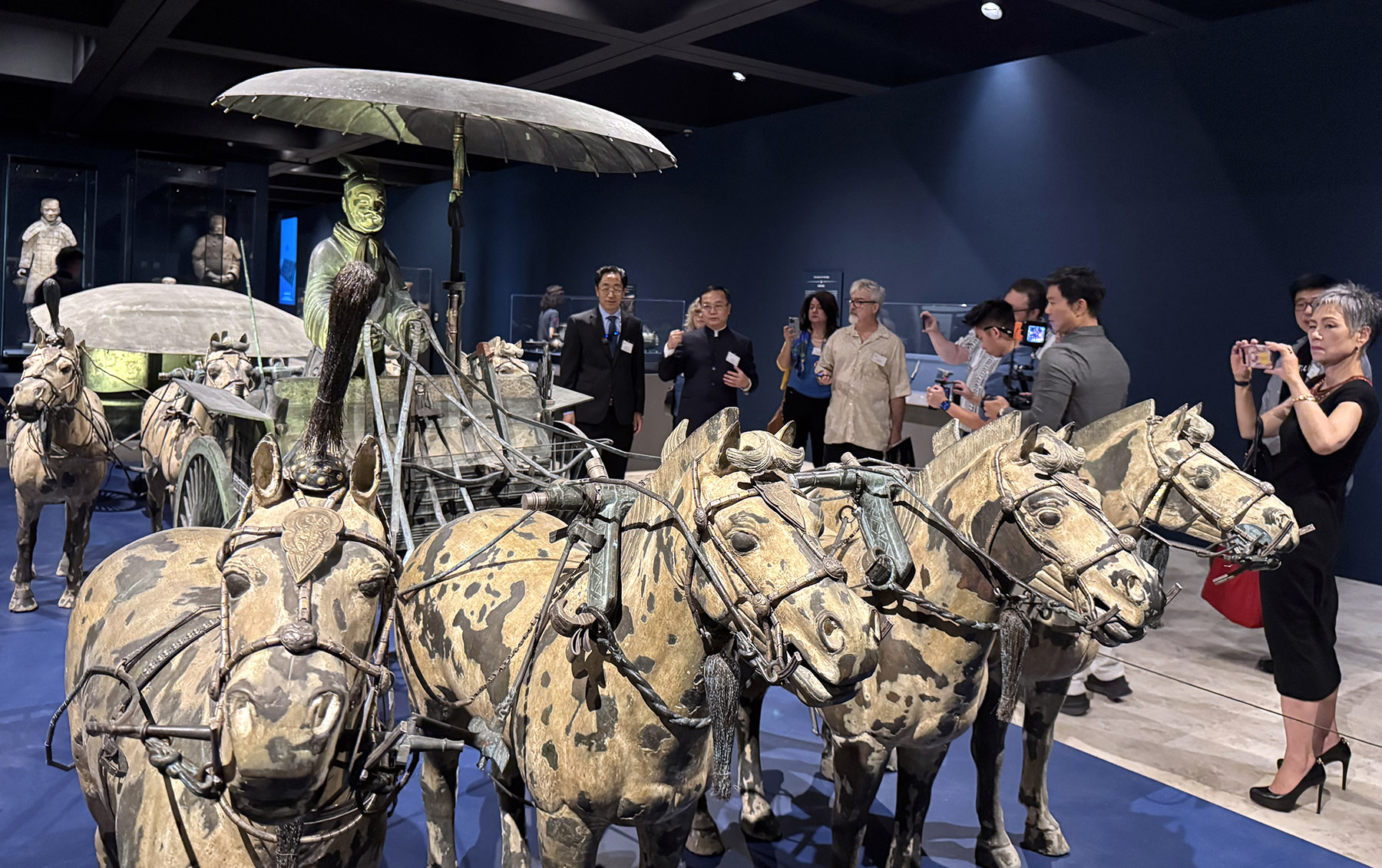
For Sean O'Harrow, president of the Bowers Museum in Santa Ana, California, the return of the Terracotta Warriors is more than a curatorial milestone — it is the continuation of a deeply personal journey that began in his youth.
Guided by his father, a scholar of Chinese and Vietnamese philology, O'Harrow first visited Xi'an in Shaanxi province as a teenager, an experience that left a lasting impression.
"My father said that an educated person must know about Chinese history, and to know China, one must visit Xi'an and Shaanxi province," O'Harrow told China Daily. "We visited Xi'an for the first time many, many years ago, and it made me understand the importance and scale of Chinese history. Everything I saw blew my mind. It was an unforgettable experience that changed my life forever".
READ MORE: Accessible documentary explores China before China
Decades later, O'Harrow now proudly welcomes the Terracotta Warriors to the Bowers Museum in Santa Ana for a third time. The museum previously hosted the iconic artifacts in 2008 and 2011. But this year's exhibition, World of the Terracotta Warriors: New Archaeological Discoveries in Shaanxi in the 21st Century, goes far beyond previous displays by tracing the origins of Chinese civilization and offering North American audiences a window into over two millennia of history.
Opening on May 24 and running through Oct 19, the exhibition marks the 50th anniversary of the discovery of the Terracotta Warriors, which is widely regarded as one of the greatest archaeological finds of the 20th century. It features more than 110 newly excavated artifacts from across Shaanxi province, many of which are being exhibited in North America for the first time.
"We aim to present the latest archaeological discoveries from Shaanxi and explore how the Qin Empire was formed," said Jiao Tianlong, chief curator at the Bowers Museum. "This collection offers fresh insights into how the Qin unified China and the ancient civilizations that preceded it."
The immersive journey begins with relics from Shimao, one of the earliest known fortified cities in China, dating back to around 2300 BC. From there, visitors are guided through the Shang (c.16th-11th century BC) and Zhou (c.11th century-256 BC) dynasties, leading up to the Qin Dynasty (221-206 BC) and the life-sized Terracotta Warriors that famously guarded the tomb of Emperor Qinshihuang after he died in 210 BC.
In addition to the iconic warriors, the exhibition showcases exquisitely crafted chariots, ceremonial jade and gold ornaments, ritual bronze vessels and ornate fittings from royal tombs.
Mark Bustamante, director of special exhibition programs at the museum, noted that this year's show goes deeper into the historical timeline. "We're really excited because it reaches back another 2,000 years into the origins of China," he said. "It looks at how different powers and cultures helped shape the nation by introducing technologies like bronze vessels and chariots, which culminated in the unification under Qinshihuang".
ALSO READ: Tour guide captivates visitors with Shaanxi charm
The exhibition is also distinguished by its use of modern technology. Through interactive digital elements, visitors can engage with the artifacts in new ways, including a painting station that allows them to color Terracotta Warriors using traditional palettes once used on the original figures.
For Anne Shih, chairwoman of the Bowers Museum Board of Governors, the exhibition is the fulfillment of a long-awaited dream. "I felt so proud to make this dream come true again," she told China Daily. "We hope this will foster even closer ties between the people of China and the US. This exhibition is a powerful bridge for cultural exchange and mutual understanding."
The exhibition is jointly organized by the Bowers Museum and Emperor Qinshihuang's Mausoleum Site Museum, with support from the Shaanxi Provincial Cultural Heritage Administration.
Contact the writer at renali@chinadailyusa.com


